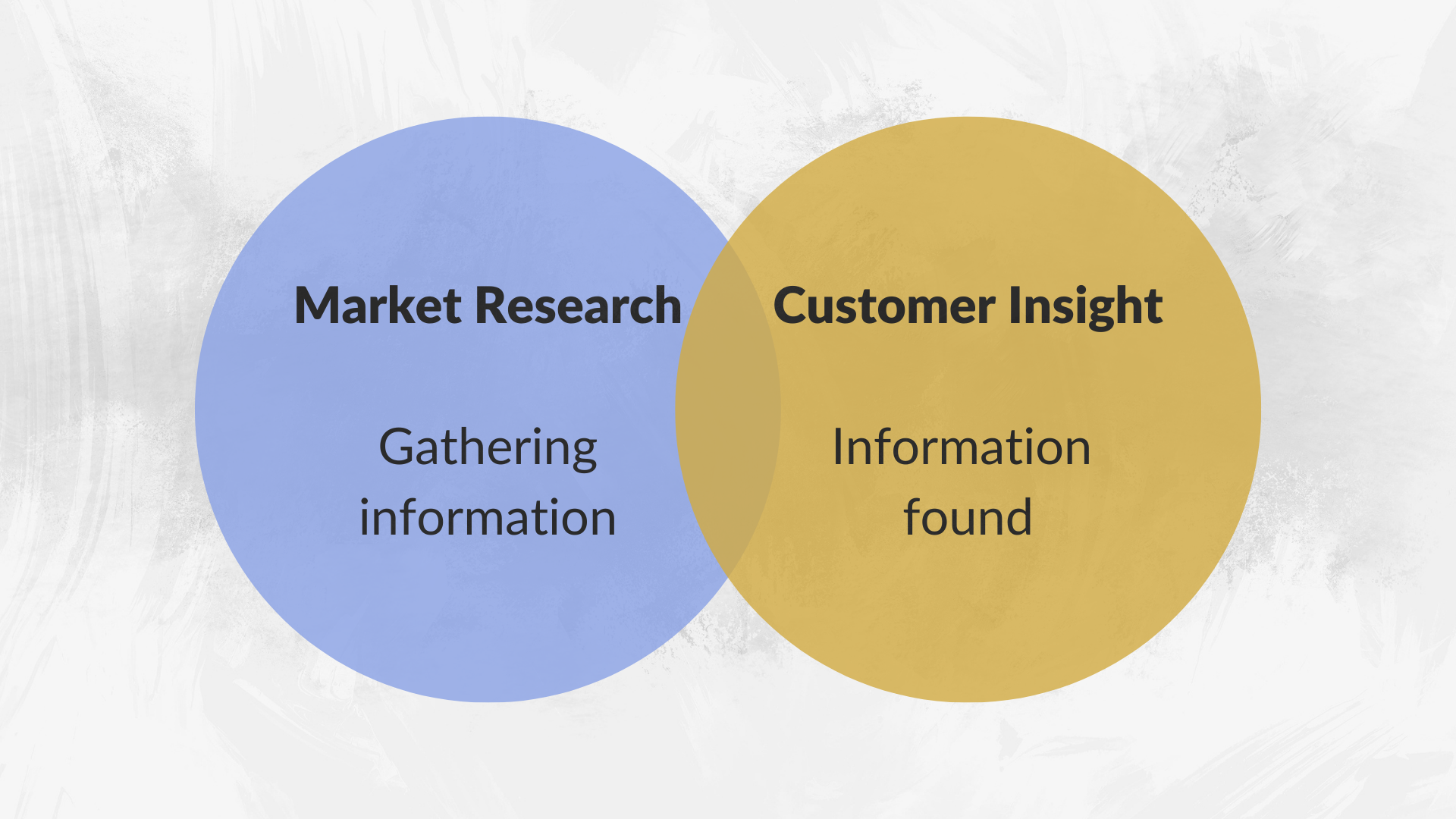- Sep 15
- 12 min read
Market research & consumer insights: why does your startup need both?
Boosting revenue and improving marketing strategies are possible when business leaders understand a target audience's demographics and their purchasing behaviour. Market research and customer insights are excellent data sources for marketing and product development professionals to optimise their campaigns. Companies use marketing software platforms to analyse vast amounts of data and identify purchasing trends to shape business development plans and marketing campaigns.
Nowadays, the terms ‘market research’ and ‘customer insights’ are often used interchangeably. Both are excellent sources of knowledge that might help you make better business decisions.
The truth remains, though, that each performs a specific role. Defining the line between market research and consumer insights can help you know when to rely on each and how to get the most out of both.
Table of contents |
Customer insights
You get a glimpse of customer insights when you conduct customer surveys, solicit online reviews, or hold focus groups. Defining customer insights means that they are the thoughts, opinions, and experiences shared by individuals and interpreted by businesses to understand their customers better.
Customer insights come in a wide range of formats, such as:
- Online reviews
- Customer interviews and surveys
- Social media comments
- Forum posts
- Focus groups or panels
- Customer test studies
In short, the customer insight process involves any medium through which customers can give feedback to a business or brand. Moreover, customer insight can be collected informally, such as by scanning your social media profiles for comments; or formally, such as through structured, solicited feedback collection processes.
Ultimately, it is all about getting into customers’ minds and using data to reach specific and actionable conclusions.
Market research

Market research is gathering information about your target market and customers to verify the success of a new product, help your team iterate on an existing product, or understand brand perception to ensure your team effectively communicates your company's value. Some relevant data in market research are as follows:
- Size of an addressable market
- Factors that influence purchases
- Demand for an industry, product, or service in a given area
- Demographic data to create buyer personas, such as age, income level, and/or education
- Brand competitors
- Market gaps
By conducting market research, you can obtain a larger sample size of your target audience, eliminating bias and assumptions to get to the heart of customer attitudes. Consequently, you can make better business decisions if you understand the bigger picture.
According to Statista (2022), the market research industry is currently worth an estimated $73.4 billion. In many cases, dedicated market research firms conduct research and studies on behalf of companies. Other information sources, such as news outlets, can offer insights into a particular market.
Where do market research and customer insights meet?

The key to making informed decisions and maximising resources is having accurate and actionable data in market research and customer insights. The two aim to get inside customers' minds to understand their behaviours and why they behave the way they do. And both can help you make sense of your business’s current position in the market and decide what you need to do next to maintain or scale that position.
Although market research and customer insights serve different purposes, they do not necessarily exist in separate compartments. Customer insights are often incorporated into market research projects to add context.
Goals:
Identifying new audiences for products and services, such as geographic regions and age groups, can be accomplished by conducting market research. A company can increase its revenue through market research and customer insights; however, market research usually has broader objectives. For instance, a software company's leadership board want to conduct market research to decide whether to develop a software platform for small and medium-sized companies. Moreover, the company also wants to use market research to understand the sector's competitors.
On the other hand, a company can refine its products and marketing approaches to relate more effectively to its target audience by using customer insights. Marketing and development teams often use customer insights to adjust existing products or campaigns, but they can also suggest new products or services. For example, a SaaS company relies on predictive analytics to identify customer churn patterns and discovers that 80% of first-time clients are not likely to return after their first visits. A business could counter this issue by launching a follow-up campaign, including discounts, promos, and personalised emails to win over prospects to become customers.
Methods:
The sources of information in market research are greater than those in customer insight data; thus, a wider variety of data collection methods are required. To identify new markets for products and services, market researchers might examine economic trends, population distribution, and regional demographics. In many cases, they create interactive maps to illustrate how various data sets intersect, such as age and average income in a particular region. In addition to conducting their market research, companies might also hire an independent market research firm to help them conduct customer insight research and general market research.
So far, we’ve discussed how imperative customer insights are for any business. There are several ways to gather customer insights for your company, but it’s best to start by conversing with your buyers across multiple mediums. You can also collect customer interaction data from other touchpoints. From there, use technology to organise and interpret the datasets.
Scope of data:
Typically, market research processes collect more data than customer insights research. Business leaders can use this information to understand the market for products or services in a particular area. B2B market research tends to conduct smaller sample sizes than B2C market research studies. One reason is that B2B companies often target a more niche audience for their solutions than B2C products. For example, a shampoo bottle can be marketed to customers worldwide, whereas a B2B solution may only have an addressable market of 100,000 companies or less.
Customer insights can also help companies map their customer journey, identify gaps where there might be some, and find what works best and can be improved for a better user experience and customer journey, from awareness to purchase and advocacy. For example, a fintech company's business development team might post an online survey on its website, asking visitors if they've ever tried a service from the company and whether they plan to purchase again. As a result of this information, sales teams can better understand how returning customers contribute to their revenue goals.
Why does your startup need both?
.png?width=1920&name=methodology%20(1).png)
Brands need a bird’s eye view and a “street view” of the territory when they launch new products, enter new markets, or make decisions that will affect their customers. As a starting point, high-level views provide general information about a specific challenge, but for brands to understand the challenges’ intricacies, they need detailed views. The details give a clearer picture of why something is the way it is and can help businesses make more informed decisions in the future.
Market research goes well beyond surface metrics of which topics are trending. It also helps you understand who is leading the conversations (key opinion leaders, influencers, detractors), where they’re talking (forums, blogs, news, media), and what is being said. Brands can explore demographics, sources, sentiment, top people mentioned, leading companies, and so much more. Spotting potential competitors (known and emerging there as well!) and better understanding your share of voice are a given.
Customer insights will add context to these market findings. The complex mixture of generations, gender, associated interests, professions, how they self-identify, and their perception of your category, your company and the world combines to form a unique psychographic profile. And it’s one that you need to get right – every time. It’s not an easy task, for sure.
Considering the data source, customer insights and market data can present drastically different perspectives. Customer insights may support the findings in market research, but it’s important to note that sometimes the results represent two switches of the same light. With market research, brands look at general industry data from news media and similar sources - not the customer’s voice.
You should not waste money developing products your target market will not buy. A poor product fit can damage your brand’s reputation and image. Companies can minimise the guesswork involved in making decisions by conducting market research and gaining customer insight. And the most important thing is to blend information (market data) with personal feelings (insights) to create messaging that resonates with your target audience.
Did you know?
Did you know? Carter Consulting can help you conduct your market research & customer insights. As your virtual CMO, we will strategically identify the key marketing activities that your business would benefit from and prioritise.
Speak to us today by booking a discovery call so that we can understand your requirements.

Comments